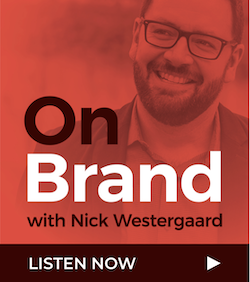So, now that you’re sold on the concept of content marketing for your brand — what’s next? Probably making some of that aforementioned content, which is also where many businesses hit a snag. You see, developing strong content takes time …
What’s more, content creation is not a finite task. You have to keep a steady stream of it coming to build a committed community around your brand. Today organizations small and large are strapped for time and resources, which can conflict with the demands of creating useful and engaging blog posts, videos, podcasts, white papers, and other forms of content.
Personally, the demands of my blog, small business, and four small kids put me (admittedly one of the smaller examples) in the same boat. As such, maintaining consistent quality and quantity of blog output needs to be carefully planned and managed.
How do we do this? By managing our time more like a publisher or news producer.
Use an Editorial Calendar
People always nod when speakers lay out the axiom, “With the Internet, everyone’s a publisher.” While this is true, I invite you to show me a publisher from the traditional media world of newspapers and magazines who doesn’t have an editorial calendar. And yet the business masses nod still. Why’s this calendar so important? Time management! The very point we’re discussing. As a publisher, producer, blogger, and content creator, you have to know what comes next. (WordPress has a great Editorial Calendar plugin.) There’s also another reason but I’ll come back to that in a bit.
Carry an Idea Notebook (Always!)
Where do all of these content ideas come from that I’m supposed to fill this calendar with? Remember the old timey movies with reporters talking fast? When new story ideas present themselves, the fast-talking reporter always whips that little notebook out of their back pocket and starts scribbling. One imagines that they always have this notebook on them. As a content marketer, you need to do the same thing. However, with tools like Evernote, you don’t need to carry a literal notebook (though some remain loyal to their Moleskines) just something that you can always have at the ready.
Form an Editorial Board
If the stress of defining your content is too much pressure, consider forming an editorial board to help shape your content. Enlist customers, readers, and peers to help give you an objective look at your content past, present, and especially future.
Always Be Drafting
Tools like Evernote — especially when enhanced with your phone’s voice command feature — make it possible to turn little nooks and crannies of time into drafting opportunities. Case in point, recently I found myself drafting in Evernote (via my iPhone) while pushing my daughter on the swing at the park. Before you say, “bad dad!” and start singing Cats in the Cradle, I didn’t ignore her for 30 minutes while I blogged. Rather, I took 30 seconds to speak a quick idea into Evernote that became a paragraph of this very post.
Start Multiple Stories at Once
The ability to draft periodically on the go also allows you to easily start multiple stories at once. Often times, starting the post, podcast, or paper is the hardest part. Once started, there’s a strong chance you’ll finish it. However, you can only start multiple stories if you know what’s next. See why that editorial calendar is a must? Starting multiple stories helps you adjust your calendar if certain pieces of content are ready ahead of schedule. This keeps you from missing your deadline …
They’re Called Deadlines for a Reason
As regular readers know, I’m a stickler for maintaining a consistent blogging schedule. According to the word’s history, a ‘deadline’ was established in a prison as a line that prisoners were forbidden to cross. Deadlines are to be respected. If you don’t have a piece done you may need to burn the midnight oil to put your new content “to bed” like newspapermen and women of old.
Imposing deadlines for your brand’s content isn’t meant as a means of self torture. It’s meant to elevate the importance of your content internally and also with your audience, who needs an expectation set. Deadline management, too, requires that pesky editorial calendar so you know what’s due when.
Tick-Tock
Again, good content takes time. There’s just no way around it. However, by taking advantage of a few time management tips from our publishing fore-bearers, we can find balance in work, life, and content creation.
How do you manage your content development schedule? What tips can you share?









